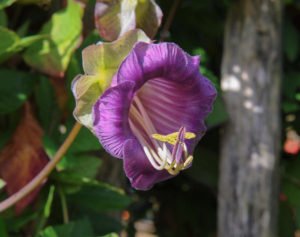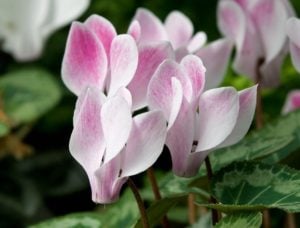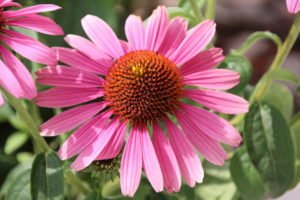“Clarkia is the flower of passion, it is like a boiling volcano. Each year, rising from a small seed to again and again to please the human eye. Clarkia-the favorite of many gardeners, attracts with its bright outfit, amazes, surprises and forever remains in memory. She’s a real lady, real beauty, perfect. It is impossible not to fall in love, it is impossible to forget.” That’s what my grandmother said about Clarkia, her love for this flower was transferred to me. You probably already guessed that this article will be devoted to Clarkia — the secrets of cultivation, planting and care.
Most often it can be found in South and North America, and the birthplace of the plant — California.
Clarkia — annual herb of the family Onagraceae branched erect stems, reaching a height of 60 cm, and a large, Cup-shaped or bell-shaped flowers of different colors — salmon pink and Carmine to purple and dark red. Racemes as blooming new flowers elongate, and the old formed fruits — lovely cylindrical four-sided box that looks like a small casket.

Love gardeners Clarkia not only for the bright color of large (sometimes reaching a diameter of 10 cm) flowers, but also for a long period of flowering — from early July to late October.
Landing Of Clarkia
Clarkia normally tolerates small cold, so it is possible to plant grown seedlings in the open ground with the arrival of spring.

Clarkia feels best in open Sunny areas with medium moist humus and nutritious loamy soils. Very bad it grows and develops on dry and clay soils. Before digging a plot for planting Clarkia in the soil for 1 square meter you need to make:
- 5 kg compost;
- 300 g of wood ash;
- 2 tablespoons nitrophoska.

Having determined the place, proceed to planting: plant seedlings at a distance of 20 cm from each other. More dense plantings will destroy plants: in hot periods they will suffer from heat, in rainy weather-from dampness. Transplant carried out together with a lump of earth, so as not to damage the already weak roots of the plant.
Care for Clarkia
Clarkia needs care throughout the season. From the first days of planting seedlings in the ground, it needs watering and constant (once every three weeks) fertilizing with mineral fertilizers.

To stimulate the most magnificent flowering Clarkia, permanently you need to pinch off appearing ovaries, if possible loosen the soil around the plant, weed weed.
Tall varieties of Clarkia need structure support (I for this purpose use ordinary wooden pegs).
Reproduction Of Clarkia
Propagated by seeds, which need to be sown directly into the ground around the middle of April. Possible sowing of plant seeds on seedlings-in early March, in small containers with a universal land substrate. In any case, seedlings should appear somewhere on the 14th day after sowing.

Transplant grown seedlings that have already managed to get a couple of leaves, carried out in small pots with a diameter of about 4 cm
Diseases Of Clarkia
Clarkia plants are very often affected by root rot caused by fungi or excess moisture. Unfortunately, when the disease is detected, the flowers will have to be removed from the flower beds immediately,they can not be saved. But in the fight against peronospora (when the leaves of the plant appear small spots) will help to cope fungicides.
Types Of Clarkia
Genus Clarkia includes about 20 species, most of which are bushy, with a compact narrow-pyramidal crown. There are both tall and short varieties. The most popular types of summer residents are listed below.
Godetia amoena
Quite high (up to 60 cm) medium-sized plant. Inflorescence a raceme that elongates as soon as the bloom of new flowers.

Cup-shaped or corona flowers of this form are often double, with a variety of colors: from white to Carmine-red; can be two-color, why look especially unusual.
Godetia grandiflora
Low (up to 40 cm) silnovetvistoe plant, characterized by a very abundant flowering. The flowers are large, reach 10 cm in diameter, funnel-shaped, the same color as the first species. Most ornamental representatives are considered G. grandiflora who have lush double flowers.







